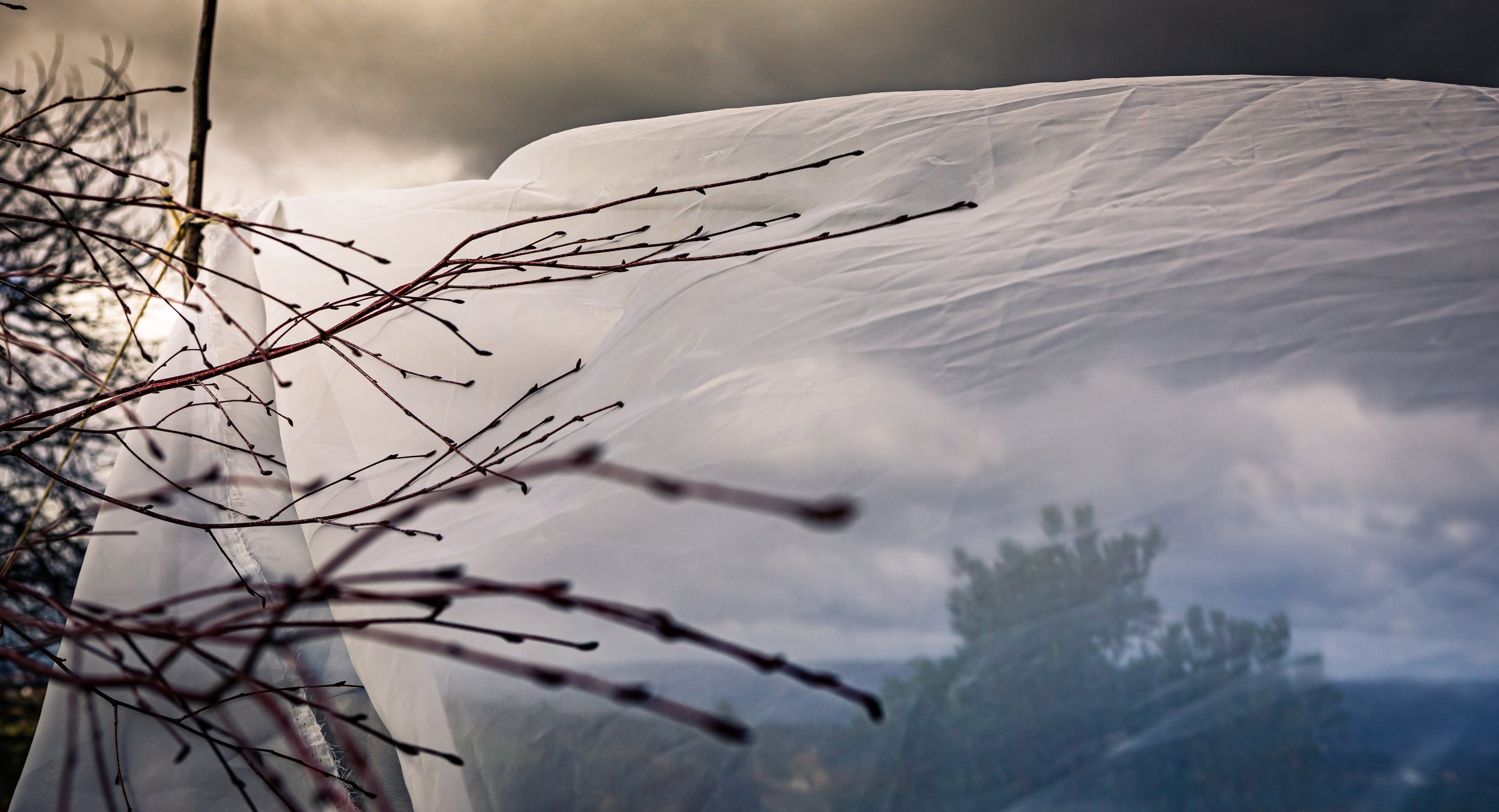
Sin Wah Lai (b. 1991, Hong Kong) is a multimedia artist. She holds a BFA in Fine Arts from Taipei National University of the Arts, Taiwan (2014) and an MA in Fine Art and Design from HKU University of the Arts Utrecht, the Netherlands (2020). Her practice mainly takes the form of collage, multimedia installation, performance, interactive experience, and socially engaged project. The displays often combine the use of (moving) images, organic material, natural elements, ready-made, texts, voices, drawings, and/or bodily approach. Lai's research tends to explore ways of thinking beyond the human and non-human divide. She tells memories in response to the living spaces where beings co-exist. By poetically looking into minute moments that happen everywhere around the environment, Sin Wah seeks to uncover the intimate relations between ones' inner perception, communities, and the outside world.
During Sin Wah Lai's residency and exhibition she wil show a personal reflection on the environment of the Serra Da Estrella telling a story about fire, life, future and past 5 years after a traumatic forest fire destroyed a great part of the park's nature.
Visit Sin Wah Lai’s personal webpage by clicking HERE.
What has truly become charcoal,
has now become part of us.
Nature is a stream of time without a beginning and an end.
During the residency, I try to deepen the practice of 'Sentipensar', the act of 'feel-thinking' on how we comprehend the world without separating mind and body, reason and emotion. This term, first introduced by a Colombian sociologist Orlando Fals Borda (1984), refers to the living principle of the Colombia riverine communities.
In my understanding, this practice, which comes close to the attempt of meditation in Buddhist's mindfulness, responds to how one perceives the "otherness" through a direct bodily experience; how one employs sensibility and awareness in the environment encompassed daily life.
The research, hence, is started from these small-scaled sensory observation, by walking on a day-to-day basis in the surrounding area of Melo, Gouveia and Serra da Estrela, Portugal, as well as picking up encountered materials and listening personal experiences from the residency's family.
One of these important stories, wildfire.
The title of the show originates from the query of what had happened after the wildfire in Melo area in 2017. Stories stay behind this peaceful scenery as burnt marks remain all over the landscape of Serra da Estrela. From an unfolding imagination, I seek to fill out how do the locals, living-beings or nature recover from the post-wildfire state. How do they find balance within a land that people share with nature so heavily affected by their presence?
The work is represented as an on-site collage consisting out of materials found in the local environment. The wood(s) become the protagonists that appear in various forms. Charcoal pencils made in Portugal are used for drawing. Burnt pinecones relate to the seeds and future of trees. Mapping as a method of narration, in an attempt to provide an organic dialogue between human and nature. Meanwhile, based on the non-linear time and the places of the map, a series of diary-like stories is projected as a trajectory of my Sentipensar's process.
Description by Sin Wah Lai.
Walking through the land of Serra da Estrela is not simply a walk in straight forward enjoyment. Within the beautiful landscape with fantastic views and broad valleys, the observant viewer can see the sad leftovers of the forest fires that occurred over the past few years. Despite a surprisingly quick recovery, what I mean to say is that is has turned green again, we still see blackened tree stumps and burned down tree trunks all around us. Trees that have not yet been felled stand out as monuments on plains covered with new growth. - It reminds me of the black crows that Van Gogh painted in his landscapes. - This mutilated landscape has not recovered yet, it has not yet found its equilibrium, its balance. We undergo it as we would an ill or mutilated part of our body. A damaged part that requires our attention.
During the past weeks artist Sin Wah Lai, who has her roots in Hong Kong, has roamed the area in the vicinity of the Quinta da Brisa Suave, which is where the Out-Post gallery is situated. During her wanderings she has collected things that are exceptions, for instance leftovers from the fires, but also pinecones and branches that were torn off trees. She has not only collected worldly materials but concepts and meanings as well, for instance the influence of the warm sun and the name of the neighboring town Melo, meaning honey. By approaching it emphatically she experiences contact with the bees that produced the honey. In the same way she feels the presence of both the domesticated – and the wild animals in these surroundings.
She not only collected worldly materials, she collected words as well, words to express her feelings, - collecting everything in a way in which a Japanese Haiku poet collects experiences and notes them down in carefully chosen words. - With her words she made a handwritten collage on one of the walls. These words are connected by curved lines, creating a unity appealing to a personal (subjective) experience.
The collection of objects has been displayed as an installation in such a way that it forms its own landscape. A landscape shaped by exceptions, - as if Van Gogh’s painted crows have been removed from the landscape and now form an artwork in itself. - The resulting play of light and shadow, give a major aesthetic meaning to the installation.
Together the word collage and the installation show the viewer a subtle and paradoxically, a powerful way, enabling them to experience the history of the landscape. A history that can only be expressed by artistic methods.
Review by Bert Jonkers.















